The terrorist attacks in Tehran, for which the Islamic State quickly claimed responsibility, mark a dangerous new twist in an already volatile and violent region. ISIS struck at the bisected heart of Iran’s Islamic Republic, with attacks on both the mausoleum of the revolution’s leader, Ayatollah Ruhollah Khomeini, and its parliament building, a key institution of the bureaucratic state and a symbol of Iranians’ century-long struggle for representative and accountable governance.
The attacks should not come as a surprise; the Islamic State has repeatedly signaled its intent to strike Iran, a predominantly Shiite state whose government claims religious authority and has been intensely engaged in rolling back ISIS’s territorial gains in Iraq. And while Tehran has boasted of its success in disrupting prior attacks at home, Iran’s neighbors, especially in Iraq and Afghanistan, have experienced this kind of horror with numbing regularity.
Still, the arrival of ISIS violence inside Iran is deeply unsettling for a regime that has trumpeted its internal stability as evidence of its wise governance and as an implicit admonition against a revival of opposition activism. With their near simultaneous timing and access to two obvious targets, the attacks exposed glaring vulnerabilities in Iran’s internal security. That the five attackers were Iranian citizens, recruited by ISIS, only sharpens the blow and heightens the sense of foreboding.
For Iran’s leadership, the attacks against such conspicuous symbols of the post-revolutionary order will reinforce the perception that the primary purpose of the attacks was not merely to sow insecurity and terrorize civilians, but rather to undermine and even overthrow the regime. While Washington and much of the world justifiably associates Tehran with sponsorship of terrorism, Iranian leaders instead see themselves and their government as perennial victims of foreign-orchestrated terrorist plots.
This is, after all, intrinsic to their political history and personal experience. The early years of the Islamic Republic were fraught with devastating violence; the devolution of authority spawned urban unrest and tribal and ethnic insurgencies, and later gave way to a devastating civil war among the divergent factions within the revolutionary coalition. During a two-month stretch in 1981, even as the Islamic Republic struggled to mount a defense against the Iraqi invasion, attacks by internal opposition groups killed the nascent state’s president, prime minister, dozens of cabinet officials, members of parliament, and other influential political figures.
Iran’s current supreme leader, Ayatollah Ali Khamenei, was among the casualties; a bomb planted inside a tape recorder exploded during a press conference he was giving in June 1981, causing serious injuries and costing him the use of his right hand. Vicious repression and the exigencies of the war with Iraq eventually subdued these domestic threats, but over the subsequent decades, traces of new unrest emerged, especially among Iranian Kurds, Baluch, Arabs, and other ethnic and religious minorities. Throughout it all and with only episodic justification, Iran’s embattled revolutionaries persistently saw the hidden hand of foreign-directed conspiracies, a legacy of Iran’s history of manipulation at the hands of the great powers.
That lens also dominates the Iranian view of ISIS. The official narrative, which has wide purchase within Iran, is that the United States and its Sunni allies in the Persian Gulf are responsible for the emergence of the Islamic State, courtesy of U.S. military interventions in the region and the Gulf states’ promotion of extremist interpretations of Islam. Khamenei and many in the security establishment go a step further, ascribing intentionality to ISIS’s rise and insisting that its ultimate intent is the destabilization of the Islamic world broadly and Iran’s Islamic Republic more specifically. “The creation of these groups goes back to America,” Khamenei has proclaimed. “Some American officials have acknowledged this. They have acknowledged that they have helped create [ISIS] in order to create discord inside the Islamic ummah [community].” He has further argued that U.S. forces provide arms to ISIS and that America’s regional allies share equal responsibility for ISIS, whose ideology is “rooted in Wahhabism which is preached by Saudi clerics, tolerated and furthermore supported by its rulers.”
[I]t was entirely predictable that Tehran would cast blame for this week’s attacks at the doorstep of both Washington and Riyadh.
With that backdrop, it was entirely predictable that Tehran would cast blame for this week’s attacks at the doorstep of both Washington and Riyadh. Hossein Nejat, Revolutionary Guards brigadier general, cited Trump’s recent visit to Riyadh as evidence that “the U.S. and the Saudi regime have ordered their proxies to embark on that act.” Nejat’s accusatory tone was echoed by Iranian politicians, but notably the supreme leader seemed to downplay the incident, which he called “too small to affect the will of the Iranian nation and its officials.” And Iran’s recently re-elected president, Hassan Rouhani, issued a restrained statement about the need to double down on combating extremism and violence in the region.
The attacks cast a decidedly more ominous tone on the beginning of Rouhani’s second term. Unlike 2013, when he assumed the presidency with a strong mandate for bold diplomacy within an extant negotiating track on the nuclear crisis, Iran is now confronted with an increasingly grave regional crisis with no readily available pathway for resolution or de-escalation. The terror in Tehran erupted in a week already punctuated by an intensification of frictions within the Gulf, as Saudi Arabia and its allies ruptured diplomatic, economic, and logistical ties with neighboring Qatar, in part as a response to Qatari engagement with Iran. Underscoring the multi-level nature of the crisis, Iran’s foreign minister, Mohammad Javad Zarif, was en route to Turkey to discuss the Gulf crisis when the Tehran attacks took place.
And unlike 2013, Iran is now facing an American administration that is determined to ratchet up pressure on Iran through every means available, through new sanctions to penalize Iran’s ballistic missile program, which moved forward in the Senate, and new U.S. airstrikes on Iranian-affiliated forces in Syria. The Trump team’s insistence on demonstrating American antipathy toward Iran’s policies extended even to a churlish White House response to the latest attacks that sought to redirect responsibility toward Tehran. The exchange of accusations between the United States and Iran speak to the depth of their mutual suspicions and resentment, which in a volatile regional environment fuels the prospect of further escalation.
The Brookings Institution is committed to quality, independence, and impact.
We are supported by a diverse array of funders. In line with our values and policies, each Brookings publication represents the sole views of its author(s).

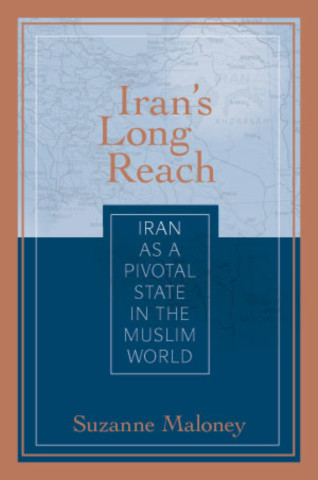
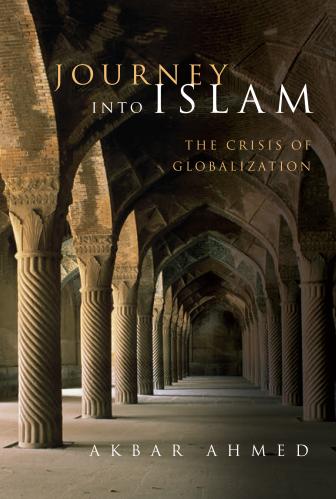
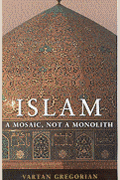

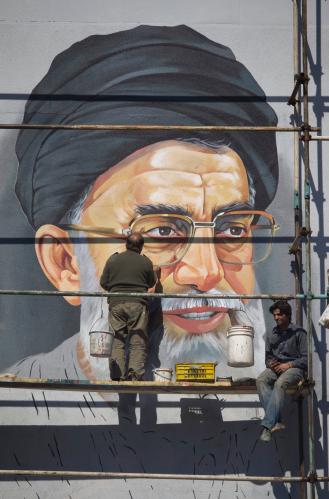



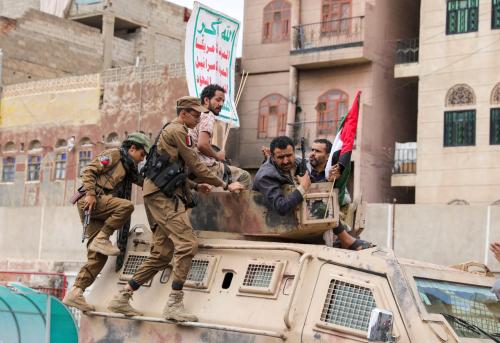

Commentary
ISIS attacks Iran and accusations fly
June 9, 2017